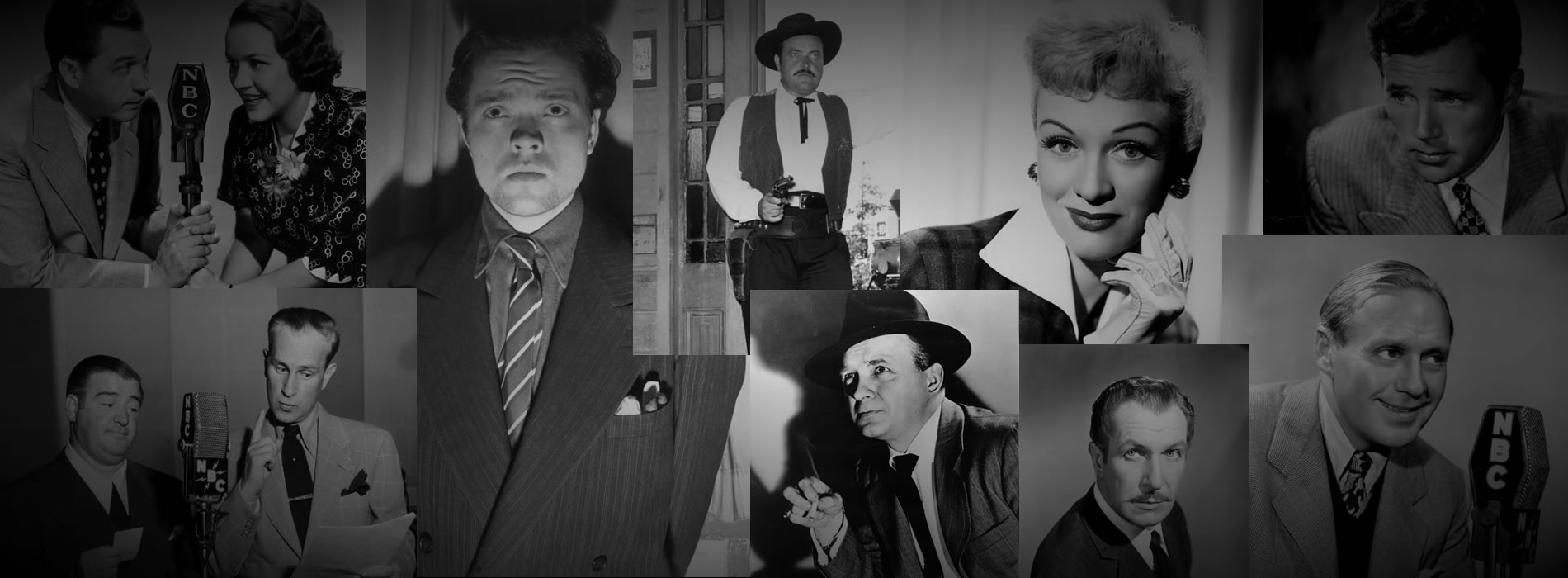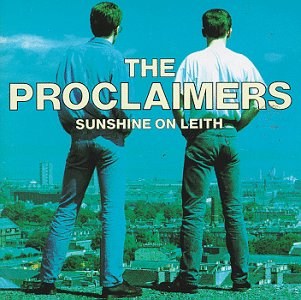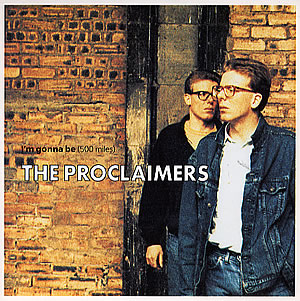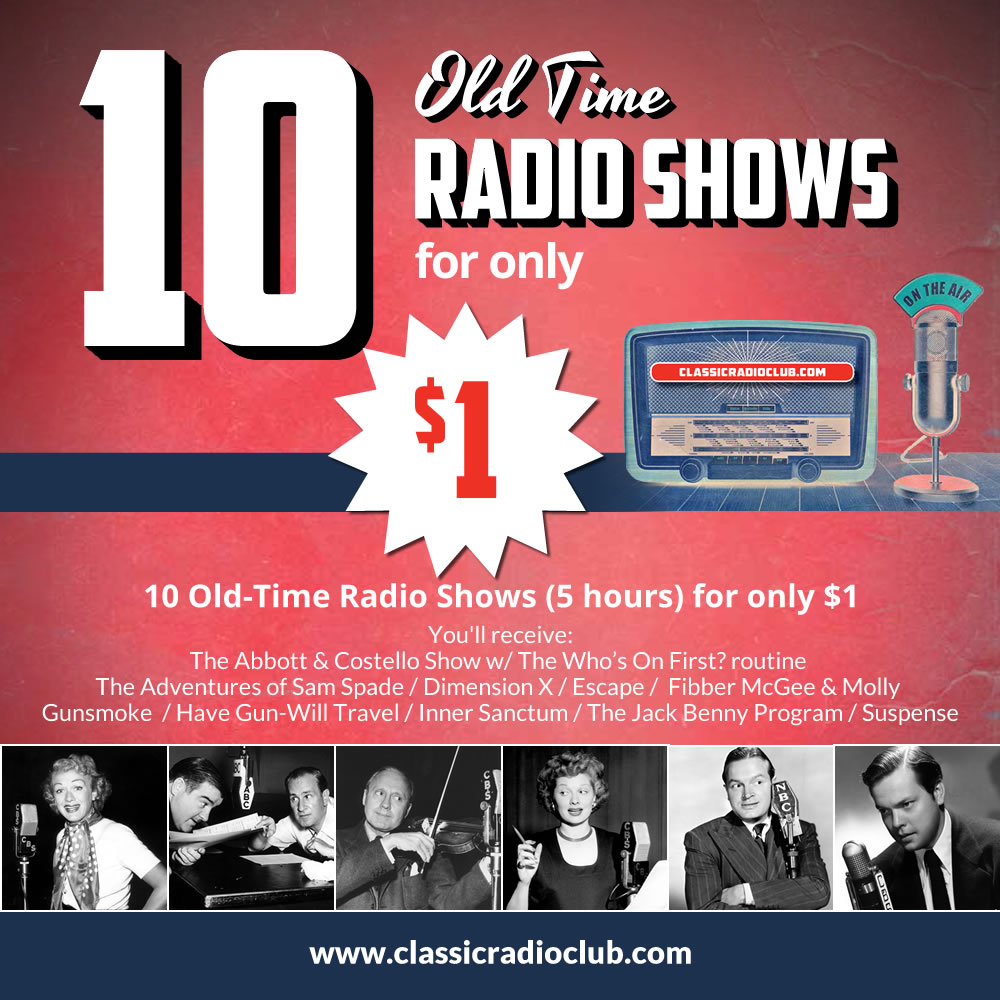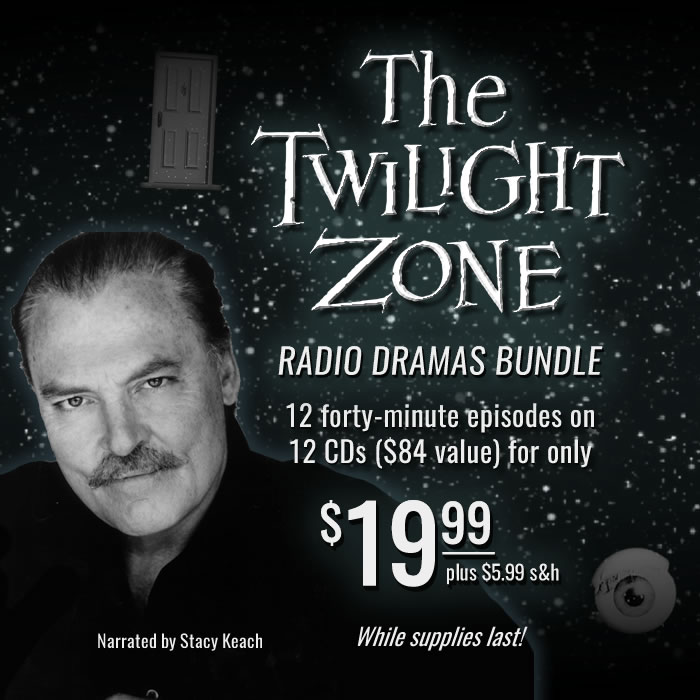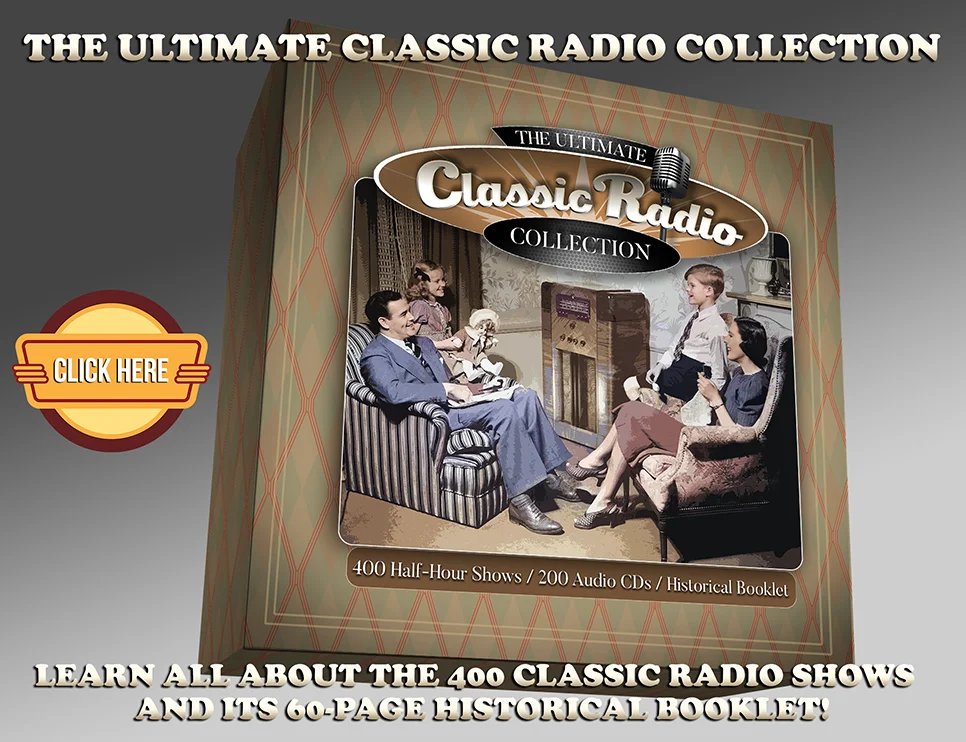
NEWSLETTER | VOL. 6, OCTOBER 2021
Welcome to this month’s edition of The Hollywood 360 Newsletter, your place to get all the news on upcoming shows, schedule and interesting facts from your H360 team!
Carl’s Corner
by Carl Amari
Hello everyone – here’s the Hollywood 360 Newsletter, October 2021 Vol. 6. As someone on our mailing list, you’ll receive the most current newsletter via email on the first day of every month. If you don’t receive it by the end of the first day of the month, check your spam folder as they often end up there. If it is not in your regular email box or in your spam folder, contact me at carlpamari@gmail.com and I’ll forward you a copy. The monthly Hollywood 360 newsletter contains articles from my team and the full month’s detailed schedule of classic radio shows that we will be airing on Hollywood 360. Each month I’ll write an article on one of the classic radio shows we’ll present on Hollywood 360. The week of October 30th, 2021 we’ll be airing an episode of LIGHTS OUT! so here’s an article on this horrific radio series.
LIGHTS OUT! Radio’s Most Horrific Series Used Killer Sound Effects
by Carl Amari
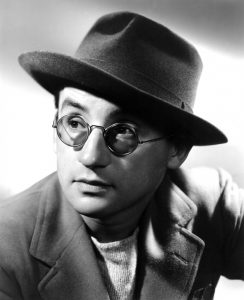 LIGHTS OUT! was the brainchild of Wyllis Cooper. Originating from the studios of WENR in Chicago, Cooper presented a late-night horror program seething with vampires, invisible monsters, evil dwarfs, and survivors of an atomic apocalypse. Several fan clubs sprang up and in 1935, NBC decided to expand coverage nationwide.
LIGHTS OUT! was the brainchild of Wyllis Cooper. Originating from the studios of WENR in Chicago, Cooper presented a late-night horror program seething with vampires, invisible monsters, evil dwarfs, and survivors of an atomic apocalypse. Several fan clubs sprang up and in 1935, NBC decided to expand coverage nationwide.
Over the decades, LIGHTS OUT! was justly celebrated for its creative use of sound effects. A soundman slurping on spaghetti mimicked cannibalism; a madman amputated fingers to the sound of carrots being chopped; a butcher’s knife cutting through a melon represented decapitation; while the snapping of spareribs and a sparking car battery simulated an execution by electric chair.
In the fall of 1942, Oboler brought LIGHTS OUT! to CBS for new sponsor, Ironized Yeast. He hosted, wrote and directed the program and confined cast numbers to a maximum of two or three while using a gong for scene changes instead of music. Under his guidance the show broadcast psychological chillers with stream-of-consciousness narrative, each featuring an element of classic horror – from giant worms and haunted houses to monsters from outer space.
In the summers of 1945, 1946 and 1947, Wyllis Cooper returned to the fold. His career in Hollywood never panned out, so he chose to return to his roots. LIGHTS OUT! made a transition to television in 1949 with Frank Gallop as weekly host. Gallop’s disembodied head introduced each open and close of the episode. With a larger budget than its radio counterpart, the TV version boasted a cast that included Hollywood celebrities. In an unprecedented move, the sponsor, Admiral Radio, agreed to maintain the ghoulish atmosphere by foregoing the middle commercial.
LIGHTS OUT! enjoyed a healthy run on television before bowing out in 1952.
LEND ME YOUR EARS | THIS MONTH’S SONG: I’M GONNA BE (500 MILES) BY THE PROCLAIMERS
by Lisa Wolf
Craig Reid: ”I can remember sitting at the piano and the chords just came to me. I reckon I just wrote the whole thing in 45 minutes. I knew that it was a good song, maybe even a single, but I had no idea how popular it would become.”
In their famous 1988 single I’m Gonna Be (500 miles) Scottish twins duo, Craig and Charlie Reid, declared their devotion to a woman by saying they would walk 500 miles, and then 500 more, to spend the rest of their lives with her. But where exactly did they walk to? No one knows for sure…
500 Miles was written in 1988 and released on The Proclaimers album Sunshine On Leith. It became a hit when the song was used in the 1993 movie Benny And Joon, starring Johnny Depp and Mary Stuart Masterson. 500 Miles was also featured in a beloved Budweiser commercial that aired during the 2015 Super Bowl between the New England Patriots and Seattle Seahawks. A sequel to the previous year’s “Puppy Love” spot where the Budweiser Clydesdales befriend a golden retriever puppy, this one finds the dog getting lost, and the horses saving him from a wolf and guiding him home.
Check out this 1989 live performance of I’m Gonna Be (500 Miles) on David Letterman, complete with an entertaining interview. This is before 500 Miles was a hit in the US.
Vince’s Verbiage: Scary Movies
by Carl’s Crabby Brother Vince
Do you like scary movies? I do, and even if you don’t, I’m sure you’ve seen a few. So, the other day a friend of mine asked me “what is the scariest movie I’ve ever seen?” Hmmm, I thought about that for a few minutes and started to think about when I was a kid. On Saturday nights in the Chicago area there was a TV show called “Shock Theatre”. I can’t believe my parents let my two sisters and I (Carl wasn’t born yet) stay up late to watch it but they did. Every week they would play a different scary movie, like: The Creature From the Black Lagoon, Frankenstein with the great Boris Karloff, The Mummy also with Karloff, Dracula with the creepy Bela Lugosi, The Wolfman with Lon Chaney, Jr., Alfred Hitchcock’s Psycho and sequels of these iconic chillers and many others. Then I thought about the ones I’ve seen as an adult like: The Exorcist, Candyman, Mimic, Poltergeist, The Thing, It, The Re-Animator, Friday the 13th and more. After some “extensive thinking” I had to go back to my youth to answer my friend’s question of what is the scariest movie I’ve ever seen? The answer is, The Mummy’s Hand, one of the Mummy sequels, from 1940. This one did not star Boris Karloff but it didn’t matter. It starred a B-movie Western actor named Tom Tyler as Kharis, the Mummy. I would have recurring nightmares of this movie. In them, the Mummy would slowly stalk me with one arm extended while dragging his foot. No matter how fast I tried to run, I couldn’t escape him. I would hide behind doors, under my bed, in my closet etc… but it didn’t matter, he would always find me. These nightmares seemed so long and real that I would wake up stiff as a board in a cold sweat almost out of breath terrified of this creature. Once I was awake I would look around the darkened bedroom still thinking I was being chased until I realized it was just a bad dream. Having these nightmares made me wish I had never seen The Mummy’s Hand. So, think about it: what’s the scariest movie you have ever seen?

Observations on the Obscure: Bud Duncan of The Cinnamon Bear.
by Karl Schadow
In the midst of last month’s celebration releasing the comprehensive cast list of The Cinnamon Bear, most importantly that of Bobby La Manche as Jimmy Barton, the actor who portrayed Paddy O’Cinnamon had been inexplicably omitted by this author. Therefore, in the current article Bud Duncan earns his rightful recognition.
He was born Albert Edward Duncan October 31, 1883 at Brooklyn, New York. By age six he was accompanying his ventriloquist father A. O. Duncan on stage. His formal education occurred at Manhattan’s Berkeley Military School. An early role was in The Postmaster’s Daughter playing at the Grand Opera House in New York. Later he toured the western states with the well-known Kolb & Dill vaudeville troupe. It was during their performances of Playing the Ponies where he acquired the nickname Bud as the result of portraying jockey Bud McGinnis. In 1911, he commenced a film career with a common theme of enacting newspaper comic strip characters adapted for motion pictures. This initial venture was Mutt and Jeff in which Duncan played the latter in three installments.
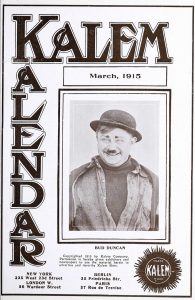 In addition to acting, Duncan was also a writer crafting scenarios for the pioneering Biograph Company. A partnership then followed with Lloyd Hamilton who was over a foot taller then the short-statured (4’11”) Duncan. This duo not only achieved fame with their stage acts but also in a series of “Ham and Bud” movie shorts released during the mid 1910s by the Kalem Company. Among their most famous collaborations are Ham the Detective and Whirlwind of Whiskers. After his partnership with Hamilton dissolved, Duncan continued appearing in film shorts throughout the1920s for various companies including Schiller Productions. Towards the end of that decade, he would once again portray a comic strip character. In this series he co-starred as Casper opposite Thema Hill’s Toots, in Toots & Casper. During the early 1930s he garnered a credited role (The Peddler) in the western, Riders of the Rio.
In addition to acting, Duncan was also a writer crafting scenarios for the pioneering Biograph Company. A partnership then followed with Lloyd Hamilton who was over a foot taller then the short-statured (4’11”) Duncan. This duo not only achieved fame with their stage acts but also in a series of “Ham and Bud” movie shorts released during the mid 1910s by the Kalem Company. Among their most famous collaborations are Ham the Detective and Whirlwind of Whiskers. After his partnership with Hamilton dissolved, Duncan continued appearing in film shorts throughout the1920s for various companies including Schiller Productions. Towards the end of that decade, he would once again portray a comic strip character. In this series he co-starred as Casper opposite Thema Hill’s Toots, in Toots & Casper. During the early 1930s he garnered a credited role (The Peddler) in the western, Riders of the Rio.
A 1935 syndicated newspaper column by Relman Morin related the recent deaths of prominent silent film stars Mack Swain and Lloyd Hamilton. Morin also noted that as Hamilton’s former partner, Duncan was currently involved in radio transcriptions. Indeed, since at least 1933 Duncan had been cast in such ventures as Origin of Superstitions and Air Mail Mystery produced by the Hollywood-based Radio Transcription Company of America (Transco). He was also in series recorded by Freeman Lang Transcription Studios. In 1934, he would become part of a morning variety show hosted by Bill Sharpless on KNX in Los Angeles. During the mid 1930s Duncan was a regular on the station as a member of various comedy serials including Hometown Sketches, Elmer Goes Hollywood and the Hal Berger creation, The In-Laws. As Buddy Bumpkin, he was a feature player on the variety show, Hollywood Barn Dance. Occasionally, directors of other stations would choose him for leading dramatic assignments as did John Hix (of KHJ) for the Strange As It Seems episode “The Baby Spy” (October 11, 1935).
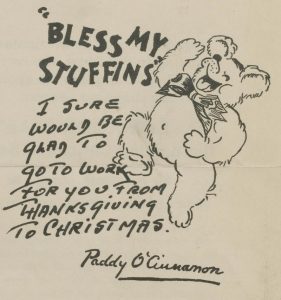 In 1937, Bud Duncan was cast in a supporting role as Major Mite in the first of the two Jerry Dougan adventure serials, Jerry of the Circus. His most acclaimed role in radio was that of Paddy O’Cinnamon in The Cinnamon Bear. In this children’s serial fantasy, a stuffed animal came to life for Judy and Jimmy Barton to assist them in locating the missing Silver Star for their Christmas Tree. Decades later in a profile of the show by Don Jensen (Kenosha News, December 21, 1982) in which the program’s creators Glanville and Elisabeth Heisch were interviewed, Duncan was characterized as: “A non-professional actor . . . a jack-of-all-trades at the recording studio had the perfect high-pitched voice for the bear.” Perhaps Duncan’s perceived status was on account of his later lack of performing in radio and television during the ensuing decades compared to Hanley Stafford, Joseph Kearns and Frank Nelson who were also mentioned in the article.
In 1937, Bud Duncan was cast in a supporting role as Major Mite in the first of the two Jerry Dougan adventure serials, Jerry of the Circus. His most acclaimed role in radio was that of Paddy O’Cinnamon in The Cinnamon Bear. In this children’s serial fantasy, a stuffed animal came to life for Judy and Jimmy Barton to assist them in locating the missing Silver Star for their Christmas Tree. Decades later in a profile of the show by Don Jensen (Kenosha News, December 21, 1982) in which the program’s creators Glanville and Elisabeth Heisch were interviewed, Duncan was characterized as: “A non-professional actor . . . a jack-of-all-trades at the recording studio had the perfect high-pitched voice for the bear.” Perhaps Duncan’s perceived status was on account of his later lack of performing in radio and television during the ensuing decades compared to Hanley Stafford, Joseph Kearns and Frank Nelson who were also mentioned in the article.
Continuing his stage enterprises, for several years Duncan was a writer and director of the Little Theatre of North Hollywood. In1942, he returned to the silver screen as the headliner Snuffy Smith (adapted from the Barney Google and Snuffy Smith newspaper strip) in two Monograms Pictures, Private Snuffy Smith and its sequel Hillbilly Blitzkrieg. Later during World War II, he served with Armed Forces Radio Service in Hollywood as Superintendent of the Shipping Department (Daily Variety, June 2, 1944). Interestingly, the 1945 Radio Annual cites Albert E. Duncan as a writer but without disclosing any specific programs.
Bud Duncan passed away on November 25, 1960 at age 77. His obituary (Evening Vanguard, Venice, California) stated he had been recently associated with Radio Recorders.
Recognize Bud Duncan in any radio programs not cited above? Contact the author via email khschadow@gmail.com

MartinGrams.biz: THE CINNAMON BEAR AND ITS INSPIRATION!
by Martin Grams
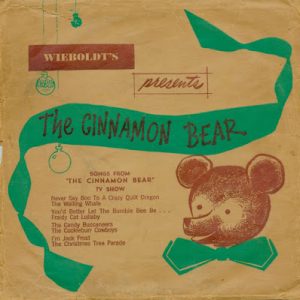 Circa March and April 1935, Metro-Goldwyn-Mayer theatrically released an eight-minute cartoon titled The Calico Dragon, as part of their series of animated cartoons known as the Happy Harmonies. With Walt Disney offering a series of musical animated cartoon shorts, Silly Symphonies, and with Warner Brothers producing Merrie Melodies, MGM’s first foray into the animation business was Happy Harmonies – each containing a whimsical song.
Circa March and April 1935, Metro-Goldwyn-Mayer theatrically released an eight-minute cartoon titled The Calico Dragon, as part of their series of animated cartoons known as the Happy Harmonies. With Walt Disney offering a series of musical animated cartoon shorts, Silly Symphonies, and with Warner Brothers producing Merrie Melodies, MGM’s first foray into the animation business was Happy Harmonies – each containing a whimsical song.
In The Calico Dragon, a little girl falls asleep after reading a fairy tale to her doll, and quickly observes many of her toys coming to life in a land of make believe. The toys act out a fairy tale in which a prince fights a three-headed calico dragon. The cartoon would later be nominated for an Academy Award for Best Short Subject (Cartoon).
So what does this 1935 animated cartoon have to do with The Cinnamon Bear? Well, it turns out this cartoon may have been the germ of an idea for the radio program. At least, that is the theory going around these days.
I would like to point out that The Calico Dragon being the inspiration for The Cinnamon Bear is a merely a “theory” and not a fact.
The Cinnamon Bear premiered on radio 80 years ago in November 1937 as a syndicated feature of Transco (Transcription Company of America). The series creators, Glanville and Elizabeth Heisch, were still around throughout the 1980s and their memories of how they created The Cinnamon Bear never included reference to any theatrical cartoon. But if the Heischs saw The Calico Dragon in the spring of 1935, it remains probable that the idea of a Crazy Quilt Dragon and two children falling asleep and traveling to a fairytale land, originated with this cartoon.
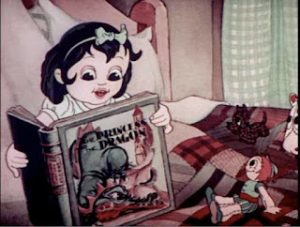
The Calico Dragon (1935)
The timing may be right if one wanted to apply reverse hindsight. In order for the radio serial to premiere in November 1937, the 16-inch transcription discs (and 12-inch promotional disc) needed to be advertised in trade columns by September or October. This meant all 26 episodes needed to be recorded in the studio no later than summer of 1937. The radio scripts and music (co-written by Glanville Heisch and Don Honrath) were no doubt written in the winter and spring of 1937. This buys them the entire calendar month of 1936 to plot the series before scripting. No serial of this caliber could possibly be created and produced within a few short weeks. The timing is about right.
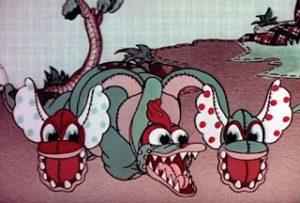
The Calico Dragon (1935)
In 1941, Transco went out of business and sold all interest in their programming to the Broadcasters Program Syndicate. As a result, The Cinnamon Bear was supposedly not broadcast over the airwaves in 1941-42. This was only temporarily and the program soon returned to the air under new ownership. In the 1950s, syndication was taken over by Lou R. Winston, also based in Hollywood.
The Calico Dragon (1935)In 1951, a television pilot was produced using hand puppets and the audio from the radio broadcasts. The program never made a successful transition to a visual medium, remaining solely as a radio property.
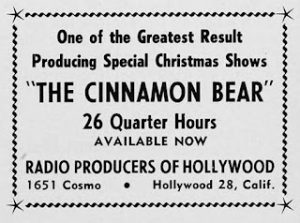
For decades The Cinnamon Bear has become an advent calendar for many families who made it an annual tradition to listen to the episodes daily from Thanksgiving to Christmas. In the 1970s, Lipman’s in Portland, Oregon, sponsored the radio program over local radio stations and for a few years had an employee dressed up in a brown bear costume, playing the role for a new generation growing up with the timeless serial.
FYI: To purchase the Complete 26-episode (7-hour) CINNAMON BEAR audio series in brilliant sound quality via digital download for only $19.99, click here.
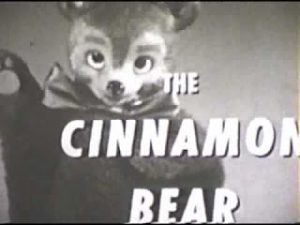
The Unaired TV Pilot
Hollywood 360 Schedule
10/2/21
Suspense 11/8/45 The Bet
Fibber McGee & Molly 11/16/48 Bowling Finals
The Damon Runyon Theatre 6/26/49 Baseball Hattie
Life With Luigi 5/1/49 Luigi Plans a Block Party
Tales of the Texas Rangers 2/4/51 Logger’s Larceny
10/9/21
Escape 3/24/50 Danger at Matecumbe
You Bet Your Life 4/27/57 Secret Word: House
Murder By Experts 7/4/49 Two Coffins to Fill
Gunsmoke 5/6/56 The Photographer
The Jack Benny Program 3/4/45 Picking Up Bags at the Train Station
10/16/21
Father Knows Best 10/26/50 A Spooky Cemetery
The Whistler 7/15/46 Custom Built Blond
Our Miss Brooks 3/4/51 The French Job Offer
The Mysterious Traveler 7/6/47 The Locomotive Ghost
The Shadow 2/15/48 The Terror at Wolf’s Head Knoll
10/23/21
The Charlie McCarthy Show 10/28/45 w/ guest, Boris Karloff
Mystery in the Air 8/7/47 The Marvelous Barastro
Suspense 6/23/49 Ghost Hunt
Murder At Midnight 4/25/47 Nightmare
The Weird Circle 3/4/45 The Thing in the Tunnel
10/30/21
Inner Sanctum Mystery 10/23/45 Corridor of Doom
The Great Gildersleeve 10/31/43 Halloween Party
Suspense 8/30/45 Nobody Loves Me
Lights Out! 5/25/43 Little Old Lady
Escape 3/26/49 The Adaptive Ultimate
© 2021 Hollywood 360 Newsletter. The articles in the Hollywood 360 Newsletter are copyrighted and held by their respective authors.

